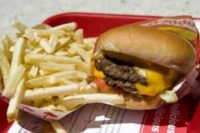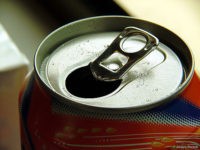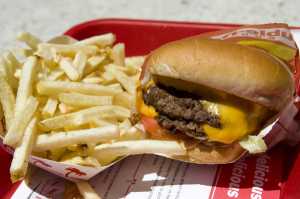Interval Training: Time-Efficient Body Fat Management
 Dr Paul Gentil
Faculty of Physical Education and Dance
Federal University of Goias
Goiania, Brazil
MedicalResearch.com: What is the background for this study? What are the main findings?
Response: Although being overweight and/or obese are associated with numerous health risks, the prevalence of both are continuing to increase worldwide. The treatment would include anything that results in an increase in energy expenditure (exercise) or a decrease in energy intake (diet). However, our metabolism seems to adapt to variations in physical activity to maintain total energy expenditure. Although lower-than-expected weight loss is often attributed to incomplete adherence to prescribed interventions, there are other factors that might influence the results, such as, metabolic downregulation.
So, instead of making people spend more calories, maybe we have to think on how to promote metabolic changes in order to overcome these physiological adaptations above-mentioned. In this regard, high intensity training might be particularly interesting as a strategy to promote fat loss. Irrespective the amount of calories spent during training, higher intensity exercise seems to promote many physiological changes that might favor long-term weight loss. For example, previous studies have shown that interval training is able to promote upregulation of important enzymes associated with glycolysis and beta oxidation pathways, which occurs in a greater extent than with moderate intensity continuous exercise.
Our findings suggest that interval training might be an important tool to promote weigh loss. However, I t might be performed adequately and under direct supervision in order to get better results.
(more…)
Dr Paul Gentil
Faculty of Physical Education and Dance
Federal University of Goias
Goiania, Brazil
MedicalResearch.com: What is the background for this study? What are the main findings?
Response: Although being overweight and/or obese are associated with numerous health risks, the prevalence of both are continuing to increase worldwide. The treatment would include anything that results in an increase in energy expenditure (exercise) or a decrease in energy intake (diet). However, our metabolism seems to adapt to variations in physical activity to maintain total energy expenditure. Although lower-than-expected weight loss is often attributed to incomplete adherence to prescribed interventions, there are other factors that might influence the results, such as, metabolic downregulation.
So, instead of making people spend more calories, maybe we have to think on how to promote metabolic changes in order to overcome these physiological adaptations above-mentioned. In this regard, high intensity training might be particularly interesting as a strategy to promote fat loss. Irrespective the amount of calories spent during training, higher intensity exercise seems to promote many physiological changes that might favor long-term weight loss. For example, previous studies have shown that interval training is able to promote upregulation of important enzymes associated with glycolysis and beta oxidation pathways, which occurs in a greater extent than with moderate intensity continuous exercise.
Our findings suggest that interval training might be an important tool to promote weigh loss. However, I t might be performed adequately and under direct supervision in order to get better results.
(more…)Do Menu Labels Cause Diners to Order Fewer Calories?
So Far, Genes Don’t Explain How Many Calories We Consume
 Dr. Christina Holzapfel PhD
Junior Research Group Leader at
Institute for Nutritional Medicine
Technical University of Munich
MedicalResearch.com: What is the background for this study? What are the main findings?
Response: A lot of articles about genetic factors and nutritional intake have been published in the last years. Findings are inconsistent and it is not clear, whether genetic variants, especially associated with body mass index, are associated with nutritional intake.
Therefore we performed a systematic literature search in order to get an overview about the association between single nucleotide polymorphisms and total energy, carbohydrate and fat intakes. We identified about specific search terms and their combinations more than 10,000 articles. Of these, 39 articles were identified for a relationship between genetic factors and total energy, carbohydrate, or fat consumption.
In all studies, we most frequently encountered the fat mass and obesity (FTO) associated gene as well as the melanocortin 4 receptor gene (MC4R). There are indications of a relationship between these two genes and total energy intake. However, the evaluation of the studies did not provide a uniform picture. There is only limited evidence for the relationship between the FTO gene and low energy intake as well as between the MC4R gene and increased energy intake.
(more…)
Dr. Christina Holzapfel PhD
Junior Research Group Leader at
Institute for Nutritional Medicine
Technical University of Munich
MedicalResearch.com: What is the background for this study? What are the main findings?
Response: A lot of articles about genetic factors and nutritional intake have been published in the last years. Findings are inconsistent and it is not clear, whether genetic variants, especially associated with body mass index, are associated with nutritional intake.
Therefore we performed a systematic literature search in order to get an overview about the association between single nucleotide polymorphisms and total energy, carbohydrate and fat intakes. We identified about specific search terms and their combinations more than 10,000 articles. Of these, 39 articles were identified for a relationship between genetic factors and total energy, carbohydrate, or fat consumption.
In all studies, we most frequently encountered the fat mass and obesity (FTO) associated gene as well as the melanocortin 4 receptor gene (MC4R). There are indications of a relationship between these two genes and total energy intake. However, the evaluation of the studies did not provide a uniform picture. There is only limited evidence for the relationship between the FTO gene and low energy intake as well as between the MC4R gene and increased energy intake.
(more…)Not All Calories Affect Health Equally
 Kimber L. Stanhope, Ph.D., M.S., R.D.
Research Nutritional Biologist
Department of Molecular Biosciences: SVM
University of California, Davis
MedicalResearch.com:? What are the main findings of this study?
Response: Sugar-sweetened beverages increase risk factors for cardiometabolic disease compared with calorically-equal amounts of starch.
We are not the first group of experts to reach this conclusion. The Nutrition and Chronic Diseases Expert Group reached a similar conclusion last year (Micha, 2017). Yet very different conclusions/opinions are being still being published by other researchers. (Latest example: Archer E., In Defense of Sugar: A Critique of Diet-Centrism. Progress in Cardiovascular Disease, May 1, 2018).
These conflicting conclusions confuse the public and undermine the implementation of public health policies, such as soda taxes and warning labels, that could help to slow the epidemics of obesity and cardiometabolic disease. We hope that the careful review of the evidence and the discussion of issues that can lead to conflicting opinions in nutrition research in this paper will help to clarify this issue.
Consumption of polyunsaturated (n-6) fats, such as those found in some vegetable oils, seeds, and nuts, lowers disease risk when compared with equal amounts of saturated fats.
It is important to note however, that the effects of saturated fat can vary depending on the type of food. Dairy foods such as cheese and yogurts, which can be high in saturated fats, have been associated with reduced cardiometabolic risk.
The non-caloric sweetener aspartame does not promote weight gain in adults.
Aspartame is the most extensively studied of the non-caloric sweeteners. None of the dietary intervention studies that have investigated the effects of aspartame consumption have shown it promotes body weight gain.
This includes studies in which the adult research participants consumed aspartame for 6 months, 1 year or 3 years.
(more…)
Kimber L. Stanhope, Ph.D., M.S., R.D.
Research Nutritional Biologist
Department of Molecular Biosciences: SVM
University of California, Davis
MedicalResearch.com:? What are the main findings of this study?
Response: Sugar-sweetened beverages increase risk factors for cardiometabolic disease compared with calorically-equal amounts of starch.
We are not the first group of experts to reach this conclusion. The Nutrition and Chronic Diseases Expert Group reached a similar conclusion last year (Micha, 2017). Yet very different conclusions/opinions are being still being published by other researchers. (Latest example: Archer E., In Defense of Sugar: A Critique of Diet-Centrism. Progress in Cardiovascular Disease, May 1, 2018).
These conflicting conclusions confuse the public and undermine the implementation of public health policies, such as soda taxes and warning labels, that could help to slow the epidemics of obesity and cardiometabolic disease. We hope that the careful review of the evidence and the discussion of issues that can lead to conflicting opinions in nutrition research in this paper will help to clarify this issue.
Consumption of polyunsaturated (n-6) fats, such as those found in some vegetable oils, seeds, and nuts, lowers disease risk when compared with equal amounts of saturated fats.
It is important to note however, that the effects of saturated fat can vary depending on the type of food. Dairy foods such as cheese and yogurts, which can be high in saturated fats, have been associated with reduced cardiometabolic risk.
The non-caloric sweetener aspartame does not promote weight gain in adults.
Aspartame is the most extensively studied of the non-caloric sweeteners. None of the dietary intervention studies that have investigated the effects of aspartame consumption have shown it promotes body weight gain.
This includes studies in which the adult research participants consumed aspartame for 6 months, 1 year or 3 years.
(more…)US Free Trade Agreements Can Contribute to “Globesity”
MedicalResearch.com Interview with:
Pepita Barlow, MSc, Department of Sociology University of Oxford, Manor Road Building, Manor Road, Oxford, United Kingdom
MedicalResearch.com: What is the background for this study? What are the main findings?
Response: The escalating global prevalence of overweight and obesity, or “globesity,” is often described as a pandemic. Globalization via free trade agreements (FTAs) with the US has been implicated in this pandemic because of its role in spreading high-calorie diets rich in salt, sugar, and fat through the reduction of trade barriers like tariffs in the food and beverage sector.
We used a “natural experiment” design (that mimics a randomized controlled trial as closely as possible) and data from the United Nations Food and Agricultural Office to evaluate the impact of the 1989 Canada-US Free Trade Agreement on caloric availability in Canada (CUSFTA).
We found that CUSFTA was associated with an increase in caloric availability and likely intake of approximately 170 kilocalories per person per day in Canada. Additional models showed that this rise in caloric intake can contribute to weight gain of between 1.8-9.3 kg for men and 2.0-12.2 kg for women aged 40, depending on their physical activity levels and the extent to which availability affects caloric intake. (more…)
How Many Calories Do You Add To Your Coffee or Tea?
Calorie Posting Reduced Adolescent Sugary Drink Purchases
 MedicalResearch.com Interview with:
Sara N. Bleich, Ph.D.
Associate Professor Department of Health Policy and Management
Johns Hopkins Bloomberg School of Public Health
Baltimore, MD 21205
Medical Research: What are the main findings of the study?
Dr. Bleich: Providing easily understandable calorie information — particularly in the form of miles of walking — makes adolescents more likely to buy a beverage with fewer calories, a healthier beverage or a smaller size beverage. Adolescents were also more likely to not buy any drink at all after seeing the signs with calorie information.
(more…)
MedicalResearch.com Interview with:
Sara N. Bleich, Ph.D.
Associate Professor Department of Health Policy and Management
Johns Hopkins Bloomberg School of Public Health
Baltimore, MD 21205
Medical Research: What are the main findings of the study?
Dr. Bleich: Providing easily understandable calorie information — particularly in the form of miles of walking — makes adolescents more likely to buy a beverage with fewer calories, a healthier beverage or a smaller size beverage. Adolescents were also more likely to not buy any drink at all after seeing the signs with calorie information.
(more…)Restaurants Continue To Reduce Calories in Menu Items
 MedicalResearch.com Interview Invitation
Sara N. Bleich, Ph.D.
Associate Professor
Department of Health Policy and Management
Johns Hopkins Bloomberg School of Public Health
Baltimore, MD 21205
Medical Research: What are the main findings of the study?
Dr. Bleich: Large chain restaurants appear to be voluntarily reducing the calories in their newly introduced menu items which contain an average of 60 fewer calories than items only on the menu in the prior year. This decline is primarily driven by new lower calorie salads and sandwiches.
(more…)
MedicalResearch.com Interview Invitation
Sara N. Bleich, Ph.D.
Associate Professor
Department of Health Policy and Management
Johns Hopkins Bloomberg School of Public Health
Baltimore, MD 21205
Medical Research: What are the main findings of the study?
Dr. Bleich: Large chain restaurants appear to be voluntarily reducing the calories in their newly introduced menu items which contain an average of 60 fewer calories than items only on the menu in the prior year. This decline is primarily driven by new lower calorie salads and sandwiches.
(more…) MedicalResearch.com Interview with:
Aner Tal, PhD
Food and Brand Lab
Department of Applied Economics and Management
Cornell University, Ithaca, New York
Medical Research: What are the main findings of the study?
Dr. Tal: Some TV programs might lead people to eat twice as much as other programs.
“We find that if you’re watching an action movie while snacking your mouth will see more action too!” says Aner Tal, Ph.D. lead author on the new article just published in the Journal of the American Medical Association: Internal Medicine. “In other words, the more distracting the program is the more you will eat.” In the study 94 undergraduates snacked on M&Ms, cookies, carrots and grapes while watching 20 minutes of television programming. A third of the participants watched a segment of the action movie The Island, a third watched a segment from the talk show, the Charlie Rose Show, and a third watched the same segment from The Island without sound. “People who were watching The Island ate almost twice as many snacks – 98% more than those watching the talk show!” says co-author Brian Wansink, author of Slim by Design (forthcoming) and Professor and Director of the Cornell Food and Brand Lab. “Even those watching “The Island” without sound ate 36% more.” People watching the more distracting content also consumed more calories, with 354 calories consumed by those watching The Island (314 calories with no sound) compared to 215 calories consumed by those watching the Charlie Rose Show. “More stimulating programs that are fast paced, include many camera cuts, really draw you in and distract you from what you are eating. They can make you eat more because you're paying less attention to how much you are putting in your mouth,” explains Tal. Because of this, programs that engage viewers more might wind up being worse for their diets.
(more…)
MedicalResearch.com Interview with:
Aner Tal, PhD
Food and Brand Lab
Department of Applied Economics and Management
Cornell University, Ithaca, New York
Medical Research: What are the main findings of the study?
Dr. Tal: Some TV programs might lead people to eat twice as much as other programs.
“We find that if you’re watching an action movie while snacking your mouth will see more action too!” says Aner Tal, Ph.D. lead author on the new article just published in the Journal of the American Medical Association: Internal Medicine. “In other words, the more distracting the program is the more you will eat.” In the study 94 undergraduates snacked on M&Ms, cookies, carrots and grapes while watching 20 minutes of television programming. A third of the participants watched a segment of the action movie The Island, a third watched a segment from the talk show, the Charlie Rose Show, and a third watched the same segment from The Island without sound. “People who were watching The Island ate almost twice as many snacks – 98% more than those watching the talk show!” says co-author Brian Wansink, author of Slim by Design (forthcoming) and Professor and Director of the Cornell Food and Brand Lab. “Even those watching “The Island” without sound ate 36% more.” People watching the more distracting content also consumed more calories, with 354 calories consumed by those watching The Island (314 calories with no sound) compared to 215 calories consumed by those watching the Charlie Rose Show. “More stimulating programs that are fast paced, include many camera cuts, really draw you in and distract you from what you are eating. They can make you eat more because you're paying less attention to how much you are putting in your mouth,” explains Tal. Because of this, programs that engage viewers more might wind up being worse for their diets.
(more…)Low-Calorie Menu Categories Reduce Calorie Posting Benefits
Calorie Intake Goes Up As Cereal Flake Size Goes Down
 MedicalResearch.com Interview with:
Barbara J. Rolls, PhD
Department of Nutritional Sciences
The Pennsylvania State University, 226 Henderson Building
University Park, PA 16802-6501
MedicalResearch.com: What are the main findings of the study?
Dr. Rolls: We found that as we reduced the flake size of a breakfast cereal so that it filled a smaller volume, individuals ate a greater weight and more calories of the cereal. On four occasions, we served a popular wheat flake cereal, or the same weight of cereal crushed to 80%, 60%, or 40% of its volume, to 41 adults for breakfast. As the flake size was reduced, people made reductions in the volume of cereal they poured, but they still took a greater amount of weight and calories. They ended up eating 72 more calories at breakfast when they ate the cereal with the smallest flake size, an increase of 34%. These findings show that variations in food volume due to the size of individual food pieces affect the portion of food that people take, which in turn affects how much they eat.
(more…)
MedicalResearch.com Interview with:
Barbara J. Rolls, PhD
Department of Nutritional Sciences
The Pennsylvania State University, 226 Henderson Building
University Park, PA 16802-6501
MedicalResearch.com: What are the main findings of the study?
Dr. Rolls: We found that as we reduced the flake size of a breakfast cereal so that it filled a smaller volume, individuals ate a greater weight and more calories of the cereal. On four occasions, we served a popular wheat flake cereal, or the same weight of cereal crushed to 80%, 60%, or 40% of its volume, to 41 adults for breakfast. As the flake size was reduced, people made reductions in the volume of cereal they poured, but they still took a greater amount of weight and calories. They ended up eating 72 more calories at breakfast when they ate the cereal with the smallest flake size, an increase of 34%. These findings show that variations in food volume due to the size of individual food pieces affect the portion of food that people take, which in turn affects how much they eat.
(more…)



